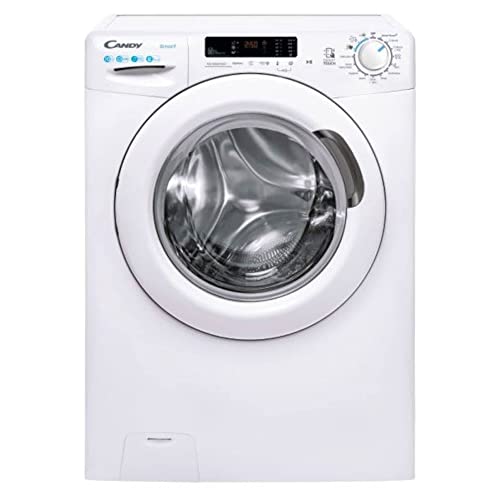What You Must Forget About How To Improve Your 10kg Front Loader
Why Buy a 10kg Front Loader? The 10kg front-loader is perfect for big loads of laundry with 13 wash programs, including handwash as well as plenty of space to accommodate large wash cycles. It's a clever machine that comes with advanced features. Front loaders generally take longer to wash, and aren't available in larger capacities, and often be prone to mildew and mould. But they are more efficient in terms of energy and water use than top loaders. Energy  The primary energy cost in a front loader of 10kg is electricity to heat water to operating temperature and also to run the motor. These costs can be offset by lower energy consumption when compared with top-loaders. best 10kg washing machine includes less power required during the spin cycle and agitation, as well as using less water. Certain machines come with a low-water cycle that uses less water than the cotton cycle. This helps save energy and water. In general, true front-load washers use less detergent than top-loaders and the tumbling action in the drum entrains air, reducing foamy suds and overflows without affecting the cleaning process. The door seals as well as the bellows on top-loaders are more susceptible to wear. The mechanical agitator of a top-loader can also cause significant wear and tear to clothing. It drags and falls clothes constantly, forcing them against one another. This abrasion is measured by the amount of fabric that builds up on the clothes dryer's screen for lint, since lint is mostly composed of stray fibers that are removed from clothing while washing and drying. To lessen this, many top-loaders are designed to operate at a slower rate and might have a “freshening” cycle to periodically clean the mechanical gears and bellows. Water Top-loading washers require an impeller or an agitator to force soap and water through the clothes, which causes wear and abrasion. Front-loaders, on the other hand, use paddles that gently lift and drop clothing inside a drum spinning for cleaning, which reduces wear. The amount of lint that is in the dryer lint filters can be used to estimate the wear rate. Lint is largely made of threads that are removed from clothes when drying and washing. Front-loading machines are less prone to leak since they have lower levels of water than top-loaders. True front-loaders may require a bellows seal or seal to stop water flowing out of the open door during operation, however they do not typically require maintenance as regularly as their counterparts on top-loaders. Additionally, front-loaders are able to operate with hot or cold water and a majority of them without any external heating source, which makes them more energy efficient than top-load machines. This efficiency could reduce operating costs for the same laundry load in places where energy, water, and detergents are expensive.
The primary energy cost in a front loader of 10kg is electricity to heat water to operating temperature and also to run the motor. These costs can be offset by lower energy consumption when compared with top-loaders. best 10kg washing machine includes less power required during the spin cycle and agitation, as well as using less water. Certain machines come with a low-water cycle that uses less water than the cotton cycle. This helps save energy and water. In general, true front-load washers use less detergent than top-loaders and the tumbling action in the drum entrains air, reducing foamy suds and overflows without affecting the cleaning process. The door seals as well as the bellows on top-loaders are more susceptible to wear. The mechanical agitator of a top-loader can also cause significant wear and tear to clothing. It drags and falls clothes constantly, forcing them against one another. This abrasion is measured by the amount of fabric that builds up on the clothes dryer's screen for lint, since lint is mostly composed of stray fibers that are removed from clothing while washing and drying. To lessen this, many top-loaders are designed to operate at a slower rate and might have a “freshening” cycle to periodically clean the mechanical gears and bellows. Water Top-loading washers require an impeller or an agitator to force soap and water through the clothes, which causes wear and abrasion. Front-loaders, on the other hand, use paddles that gently lift and drop clothing inside a drum spinning for cleaning, which reduces wear. The amount of lint that is in the dryer lint filters can be used to estimate the wear rate. Lint is largely made of threads that are removed from clothes when drying and washing. Front-loading machines are less prone to leak since they have lower levels of water than top-loaders. True front-loaders may require a bellows seal or seal to stop water flowing out of the open door during operation, however they do not typically require maintenance as regularly as their counterparts on top-loaders. Additionally, front-loaders are able to operate with hot or cold water and a majority of them without any external heating source, which makes them more energy efficient than top-load machines. This efficiency could reduce operating costs for the same laundry load in places where energy, water, and detergents are expensive.